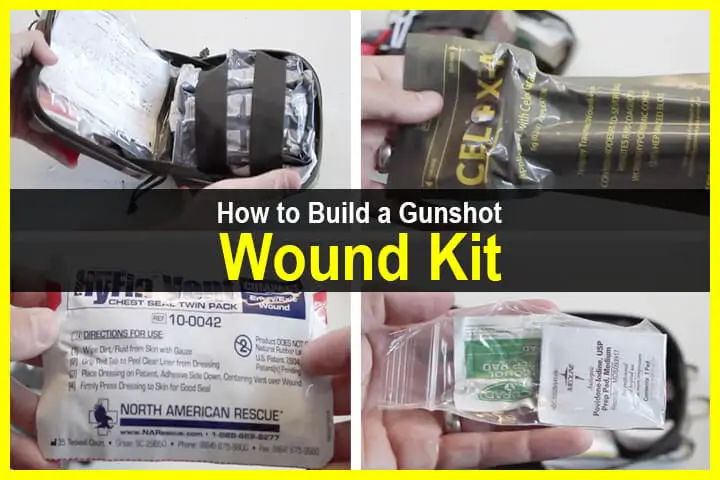Wilson Combat is a name synonymous with quality and performance. From its earliest days, it forged a reputation for making some of the finest guns the world has ever known. Beautifully exemplifying this well-earned reputation is the Wilson Combat ACP Full Size 1911.
The Wilson Combat ACP Full Size
The core of Wilson Combat’s business is the classic 1911 and the numerous variants that they have mastered. Throw in some exceptional rifles, and the company becomes a very tough act to follow. It’s because of this history I was excited when hushed whispers began to circulate from my editors about something new coming down the pipe from Wilson Combat.
I finally got the insider info once we were prepping for the Athlon Outdoors Rendezvous in Idaho. The news was exciting because I found out that there would be a new classic 1911 hitting the streets. Say hello to the Wilson Combat ACP Full Size.
The ACP is built with Wilson’s highest quality parts in the same time-tested way as their other custom 1911 handguns. However, it has reduced customer-selected options, streamlining the production and enabling a lower price for the end user.
Available in .45 ACP and 9mm Luger calibers, the ACP features the latest generation forged slide, frame, and barrels. These are hand-fitted by Wilson’s skilled pistol smiths with their 100% machined bulletproof parts for a lifetime of high performance.
The ACP retains the best-in-class Wilson Combat 100% Customer Satisfaction Guarantee for the lifetime of the product.
Makings of an ACP (American Combat Pistol)
The ACP also introduces the new Eagle Claw grip and slide surface to set it apart from the rest of Wilson’s offerings. Correspondingly, the Eagle Claw pattern offers a non-abrasive, tactile grip under adverse conditions. However, it is still easy on your hands and clothing during extended-range trips and everyday carry.
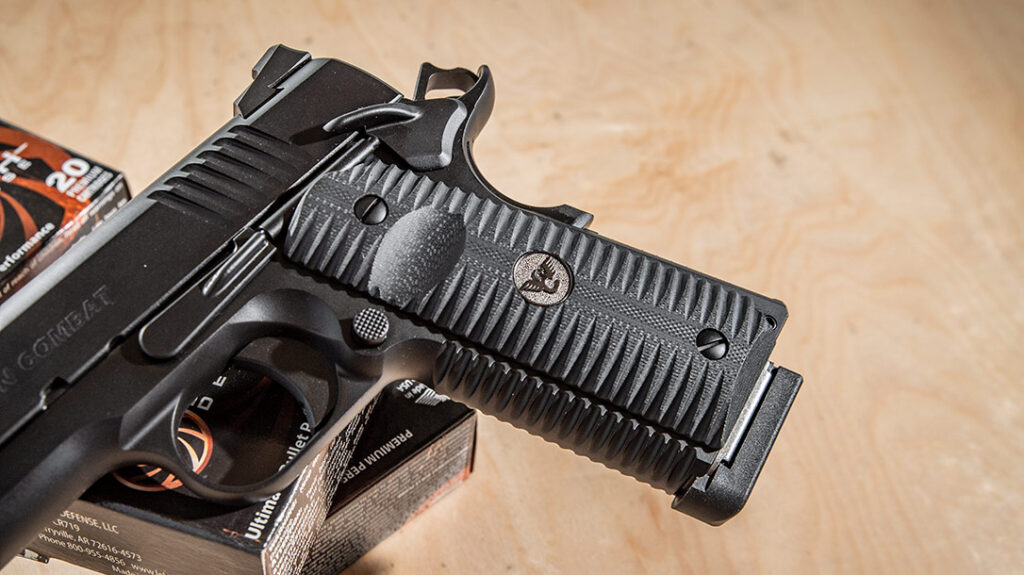
The unique look and feel of the Eagle Claw are like nothing else they have produced. The challenge with 1911 grips is to find that sweet spot between grip and grind. We want a gun that gives us great grip texture without removing flesh while we run it. The Wilson Combat ACP Full size hits that sweet spot.
A breakdown of the gun gives us a full-size carbon steel frame with Eagle Claw rear cocking serrations on the slide. It includes a Battlesight rear sight with a red fiber optic front sight. Grip-wise, we have the G10 Eagle Claw grips with black medallions.
The barrel is a 5-inch stainless match-grade barrel and bushing that has a flush cut. Additionally, the gun has the Wilson Bullet Proof magazine release and a nicely contoured magazine well. Wrapping it all up is the Wilson trigger. Set at 3.5 lb. – 4.5 lb., it has a crisp pull and comes with a medium pad.
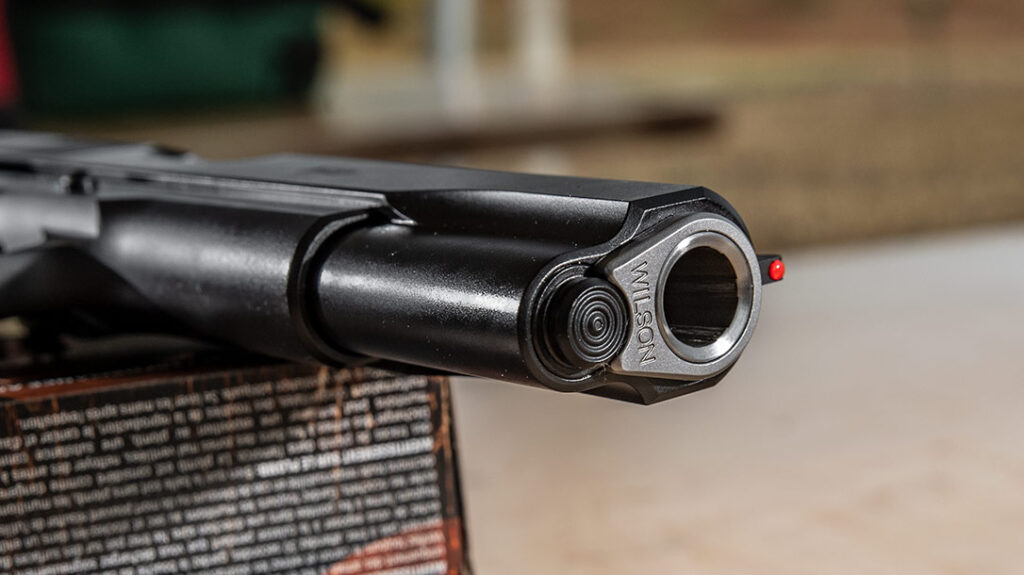
The Fit and Finish
While the gun is obviously good-looking, this was not a beauty contest. However, breaking it out on the range would prove to be a great experience.
The first noteworthy point is the fit of the gun. That term is thrown around quite a bit, and I have even heard it used on guns that sound like maracas when they shake. Wilson Combat takes great pride in the slide-to-frame mating. That was certainly the case here, as the action was like glass with no slop or yaw.
These pistols are designed for defensive use, which requires a sometimes precarious balance between accuracy and reliability. Wilson has struck a good balance in this area. The fit is excellent but not so tight that it affects reliability nor too loose that it affects accuracy. While I loathe shooting handguns from a bench, I wanted to check accuracy.
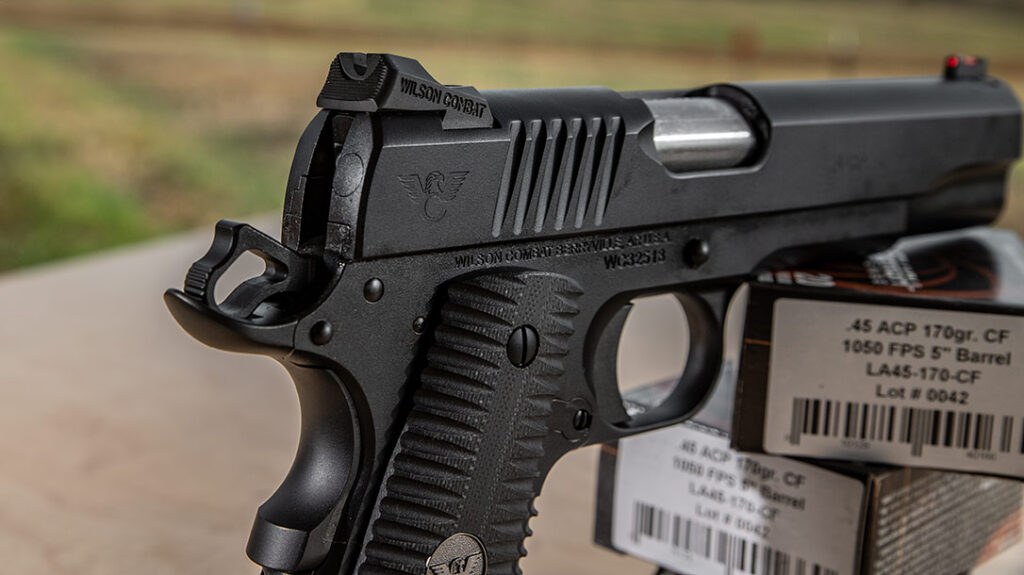
Running the ACP
At 25 yards I was easily able to consistently shoot a 1-inch group. I believe that after breaking in, and maybe with someone with younger eyes behind the trigger, it is capable of even better groups, which is saying a lot.
This is absolutely a solid performance for a defensive handgun. Likewise, in a more fitting test, the gun ran very well in both close-quarter drills and single hand-on-steel shooting.
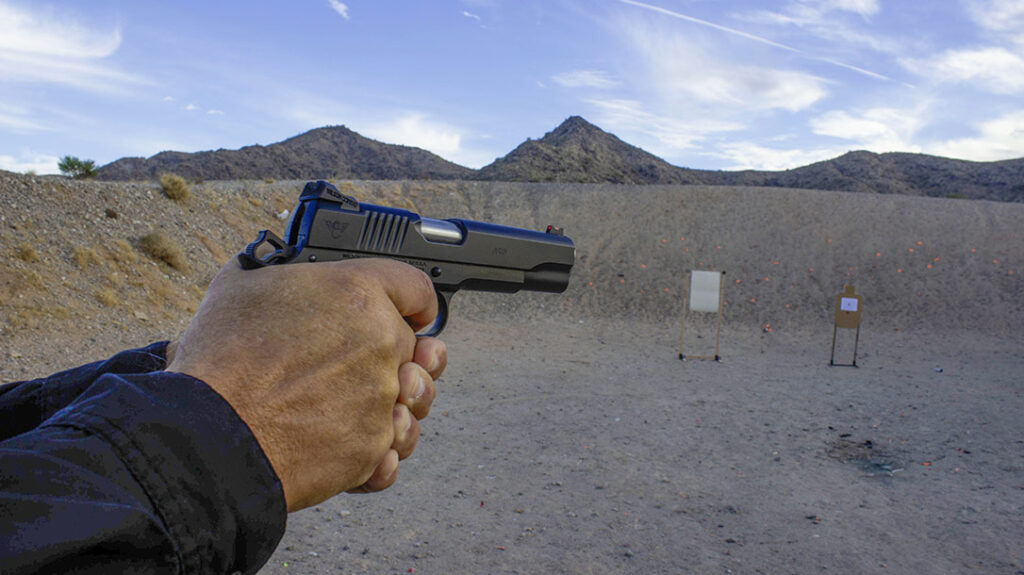
Coming in at just over 46 ounces, the ACP soaked up the recoil like a champ. This, in my opinion, is one of the many strengths of the 1911. I ran full power .45ACP rounds through the testing process, and I didn’t experience any hand fatigue.
I ran the ACP from a nicely broken in Galco leather concealable belt holster, and it worked like a charm. Likewise, I must say that the steel gun and leather holster combination had a sense of utter civility to it.
Ammo-wise, I ran three flavors in the mix. Wilson Combat 200 gr LSWC, Lehigh Defense 135 gr XD, and Federal 230 gr FMJ. Each ran flawlessly and shot well.
One quick side note on ammo. If you purchase a very nice, relatively expensive gun, it will serve you well not to shoot garbage ammo through it. I know that ammo is expensive, but if you’re serious about your guns, you need to feed it well-made ammo. This will get the best performance and extend the life of the gun.
True Reliability Out of the Box
The Eagle Claw pattern allowed me a very consistent purchase on the gun. It also allowed me to have an anchor-like grip on the gun as I cycled through the 230-grain ball ammunition.
I enjoyed shooting the Battle sights and found them to be a good fit for this 1911. They have a nice wide notch on the rear sight, which helps make for quick sight alignment without sacrificing accuracy. Add to that the easy-to-see fiber optic front sight, and it was fast.
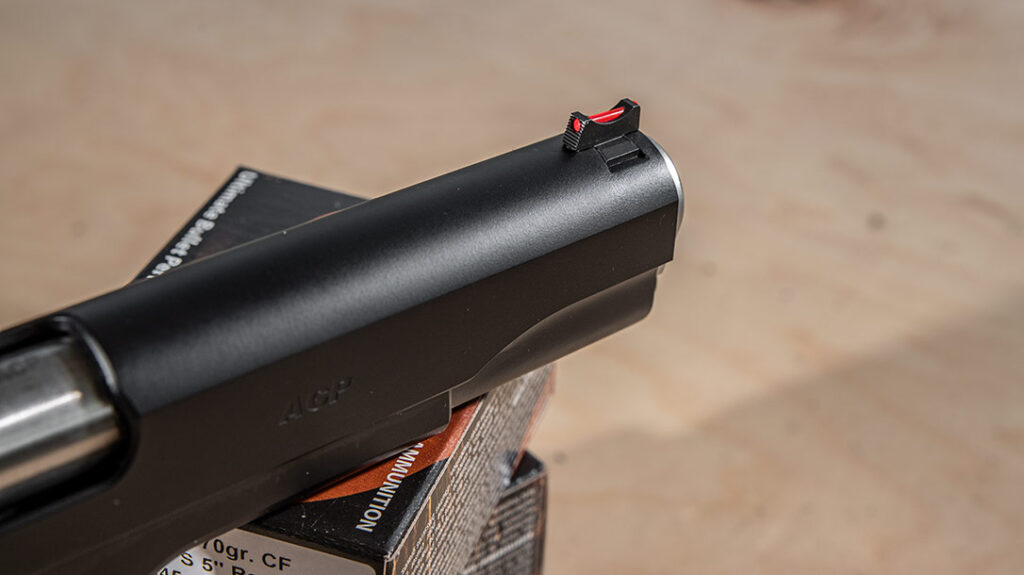
While a single-day trip to the range is no basis for long-term reliability, the ACP pistol ran with no malfunctions of any kind. While that may not seem to be noteworthy, the fact is that most semi-auto pistols require a break-in period. Yes, even those guns. This is especially true with 1911s.
Now granted, I had sufficiently lubed the gun and ran good ammo. But the fact I had no hiccups at all is indeed noteworthy. My personal opinion is that a mild break-in is an acceptable and understandable part of serious shooting. However, companies that suggest you shoot a case of ammo to break in your gun should probably take a closer look at their manufacturing process.
Final Thoughts
I have shot a ton of Wilson pistols and each one was ready to work right out of the box. On the range, I ran a mix of ball and defensive loads, and the pistol ran whatever it was fed. The trigger was very nice, and following just a slight take-up, it broke in the three-pound range.
Overall and in detail, the gun ran very well. At the end of the range session, I found myself looking at the pistol. In many ways, this is a very simple-looking 1911, with the exception of the grips. No laser engraving, no porting, no fancy slide cuts. Just a simple-looking gun that is clearly more than the sum of its parts.
While I won’t label it a sleeper by any stretch, the gun is much more than its surface looks would suggest.
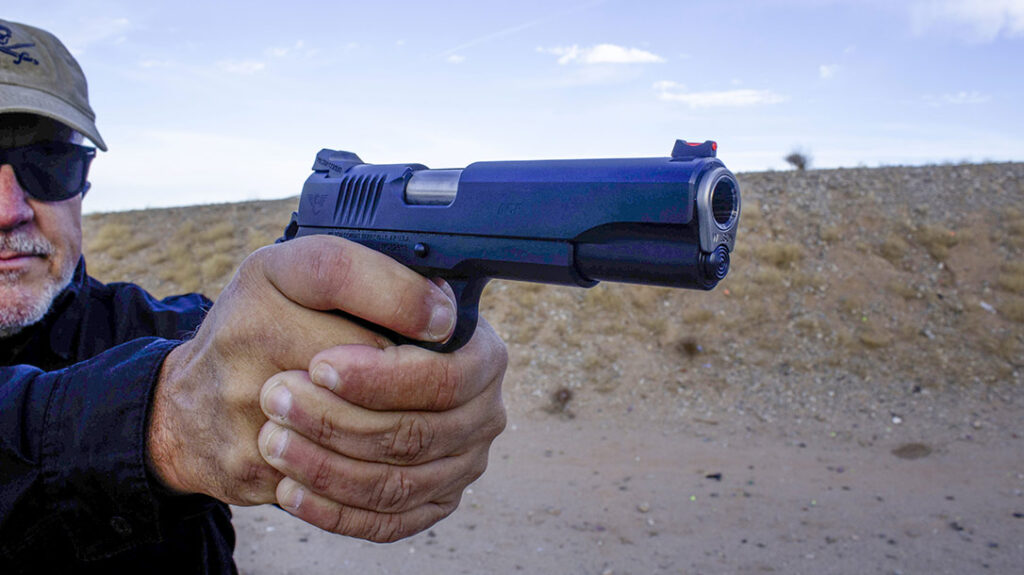
Now, I am sure that there are people reading this mumbling about the benefits of polymer guns. While they are solid performers and have proven themselves, there is something special about a 1911 though.
Even in the 1911 market, there are many choices. From bargain basement “I hope it shoots today” guns to hand-built custom art pieces in the $10,000 plus range, Wilson has found a balance in this world.
They provide a gun that is hand-fitted with exceptional craftsmanship and priced in between the two extremes. Throw in the fact that these guns are American-made, and the decision gets even easier.
For more information, please visit WilsonCombat.com.
Wilson Combat ACP Full Size Specs
| Available calibers | .45 ACP, 9mm |
| Magazine capacity | 8 rounds (.45 ACP), 10 rounds (9mm) |
| Barrel length | 5 inches |
| Overall length | 8.7 inches |
| Sight radius | 6.6 inches |
| Height | 5.6 inches |
| Width | 1.3 inches |
| Weight empty | 41.6 ounces |
| Weight loaded | 46.2 ounces |
| Accuracy guarantee | 1 inch at 25 yards |
| Base price | $3,285 (.45 ACP) | $3,385 (9mm) |
| Matte Stainless (upgrade) | $3,385 (.45 ACP) | $3,485 (9mm) |
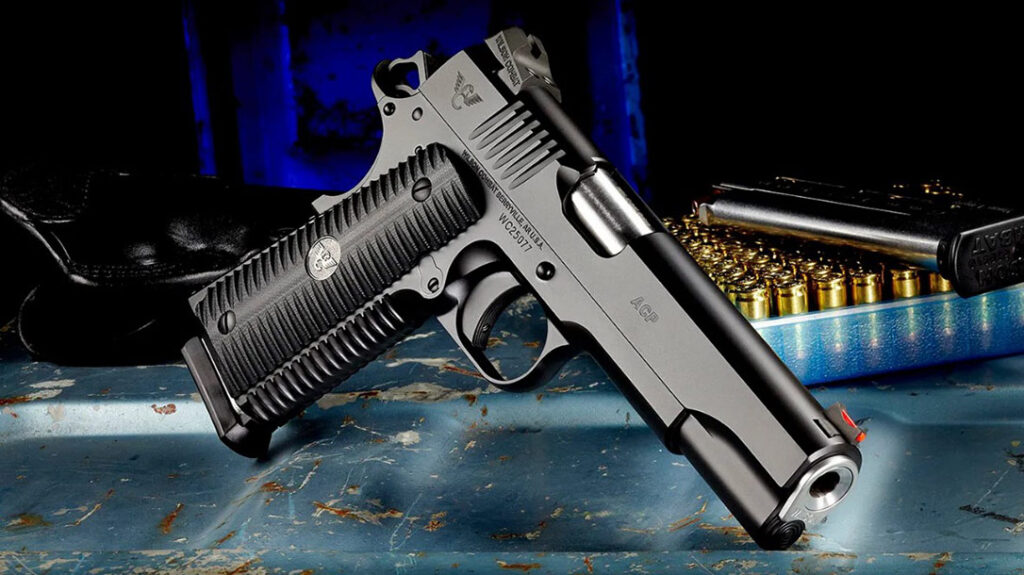



Didn’t find what you were looking for?
Read the full article here



